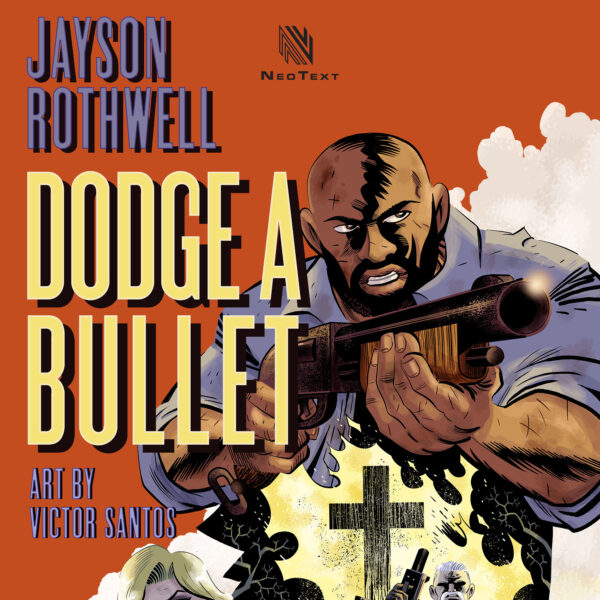Somewhere in the north of England, a man who has murdered thirteen women is hiding. Police have been searching for him for five years. Even the villains have a price on his head. But he’s too smart—or too familiar.
Including an introduction by imprint editor Alex Belth.
About The Stacks Reader Series
The Stacks Reader Series highlights classic literary non-fiction and short fiction by great journalists that would otherwise be lost to history—a living archive of memorable storytelling by notable authors. Brought to you by The Sager Group with support from NeoText
I was always amazed by how Guy could insinuate himself into the shadowy worlds of the KKK, neo-Nazis, and the East German secret police,” says Martin's longtime editor at Esquire, David Hirshey. “But he carried himself with the rakish charm of a Southern gentleman and the sartorial savoir faire of a John Le Carré character—and that has served him well. Of course, it also occurred to me more than once that he might have been working for the CIA.
Richard Guy Martin knows what it’s like to be watched. The child of strict Methodists in Athens, Alabama, Martin grew up in a house designed by celebrated modern architect Paul Rudolph, who also happened to be from Athens. Built in the mid-’50s when Martin was a child, the house came together, Martin remembered, “with staggering incongruity in Athens, Alabama, a cotton town not known for its embrace of cutting-edge modernism.” The building of the house, spare, modern, and dominated by windows, became an attraction and not just for townspeople. For years, Martin recalls, “tourists grazed through the property like cattle. For us, it was like being the cheetah family in the zoo.”
But if Martin understood what it was to be different, to be looked at and scrutinized, he developed a gift for blending in and looking back. His first major piece for Esquire came in March 1980, when as a twenty-seven-year-old, he embedded himself in the Ku Klux Klan scene in Athens. The resulting story earned much praise and garnered the magazine’s first National Magazine Award nomination. It was clear from the start that Martin’s grace on the page and his reportorial chops put him in the first rank of nonfiction writers. His next piece took him to England for seven weeks, to northern industrial towns, chiefly Yorkshire, where he reported about a modern-day Jack the Ripper, Peter Sutcliffe. “The Ripper” appeared in the January 1981 issue. As Esquire editor Phillip Moffitt aptly put it: “The rhythms, language, and attitudes of Yorkshire permeate Martin’s story and make it one of those special pieces in which the feel of an entire world is captured.”
By a quirk of fortuitous timing, Sutcliffe was apprehended within weeks of Martin's piece appearing on the newsstand. He was sentenced to thirty years before he would be considered for parole; in 2010, it was decided that he would spend the rest of his life in prison.
Martin’s story has the unsettling tension of a killer still at large—certainly, you’ll not ever listen to “Thank You for Being a Friend,” Andy Gold’s catchy 1978 pop song later used as the theme for the sitcom The Golden Girls, the same way again. Not after Sutcliffe included the song at the end of a cassette recording he mailed to the police. Martin evokes the landscape of northern England, its people, and their sensibilities with cinematic detail.
His knowledge of Europe, fluency in German, and natural ability to find the story in the most opaque foreign environments allowed Esquire to fulfill the capacity for which Martin seemed born, that of correspondent-at-large. For two decades, Martin reported for Esquire from Russia (a devastating feature on the AK-47), Africa, South America, the Czech Republic, and, of course, Berlin.
“I was always amazed by how Guy could insinuate himself into the shadowy worlds of the KKK, neo-Nazis, and the East German secret police,” says Martin's longtime editor at Esquire, David Hirshey. “But he carried himself with the rakish charm of a Southern gentleman and the sartorial savoir faire of a John Le Carré character—and that has served him well. Of course, it also occurred to me more than once that he might have been working for the CIA.”
Martin first studied German in military school because he “didn’t like the guys going to French class” and lived in Germany briefly in the early 1970s. He wrote about the country often for Esquire and not in a theoretical, removed way, but in an immersive, investigative fashion. But not so immersive that he lost a sense of being the outsider looking in. “Germany is the locus of the great crime of the twentieth century,” Martin once told Esquire. “And how the tendrils of history wrap themselves around the people is important.”
He did several major pieces about Germany including a prescient 1987 article about the end of the Cold War as it pertained to the American military presence in West Berlin and the memorable 1993 examination of German youth, “The Short Life and Solitary Death of a Young Nazi.” In an account that is equal parts gruesome and riveting, Martin found the humanity in the young thugs he wrote about. “There’s little difference between these people and the Crips and the Bloods. Essentially, they’re very weak kids in a bleak ghetto trying to empower themselves.”
Then there was the massive, ten-thousand-word piece that he reported for almost six months in 1990 immediately after the fall of the Wall, about GDR’s former Ministry for State Security, or Stasi. The piece marked the first time any reporter, German or foreigner, really brought home the voices of the East German security apparatus. Correspondents from all over the world wrote about the Stasi, but Martin delivered the recently unemployed spies themselves by coaxing them out of retirement.
The piece led to a book contract and a long-gestating volume that consumed Martin in ways that are mysterious though perhaps not uncommon of great talents; it is an epic that may or may not ever see the light of day. In the meantime, Martin’s byline continued to appear into this century, as he’s written for seemingly everyone: Condé Nast Traveler, Town and Country, Garden and Gun, the New Yorker, Paris Match, the New York Times Book Review, Rolling Stone, Men’s Journal, Field and Stream, US Weekly, and Forbes, among others. He’s the consummate magazine writer—front-of-the-book essays or long features or profiles, a five-tool player who has far outlasted his peers on the beat.
Ultimately, Martin’s upbringing in that small Alabama city, whatever his degree of estrangement, is part of what imbued Martin’s world view and prose with such unmistakable authenticity. His is a voice that invites you at every turn to pull up a chair and listen, as his deep, committed reporting draws you into his narrative—a writers’ writer whose chief loyalty is to the tale being told.
—Alex Belth, Stacks Reader Series editor
Portrait of Guy Martin by WBYK
Click here to buy a copy of The Yorkshire Ripper or scroll down to read a short excerpt.
HE IS GYPSY STOCK, short and broad with a shovel face and curly brown hair, limestone-blue eyes. He is fifteen or sixteen pints into his afternoon at the Colony Club. It is a two-room West Indian spot where Black and White ponces shoot pool in reggae time while their girls work the crowd. This man is not a pimp, but he fits. He passes remarks about fixing up hot cars, about period pine antiques, not so much to reveal himself as to testify to the quality of his information. Now he is drunk enough for the big truth. He talks with his thick hands in the mercurial Gypsy style, but his voice is native Leeds.
“I were drinkin’ wi’ Wilma McCann the night before she were killed.” He puts down his pint, rocks closer. “Minge. He cuts out minge.” With his hands he improvises a vagina at his crotch. He moves his left hand up to his chest. “And right tit. Always cut her right tit.” He rocks back, switches hands, says in a normal voice, “Sorry, I mean left tit.”
It may even be true. In West Yorkshire these days, the breeziest tale is as viable as a coroner’s report; people have begun to assemble their own truths. Wilma McCann’s murderer has deftly confounded the entire region by killing time and again while the largest investigation in British criminal history is under way to find him.
Five years, seventeen attacks, thirteen dead. At one time a rotating team of some 460 police and their superiors in four counties across the north of England were at work on the case. Well over two hundred thousand people have been interviewed. About twenty-five thousand homes have been searched; a hundred and seventy-two thousand vehicles have been checked. At this writing, the investigation has cost roughly four million pounds—well over nine million dollars. The police do not yet have a reliable physical description of the murderer. The twelfth murder, a year ago September, was committed some five hundred yards from a large police headquarters.
All of the victims have been women the killer sighted outside at night. Eight of the dead and two of the survivors were prostitutes. With the exception of one half-caste, all of the victims were White. The average age of the women dead is twenty-six; the average age of the four survivors is thirty-seven. The youngest killed was a girl of sixteen, the oldest a woman of forty-two. Twenty-five children have been left motherless. Like bad car wrecks, each of the seventeen attacks occurred when the victim was at her most comfortable, in familiar surroundings. Eight of them were within shouting distance of home. One was in her own bed.
The killer favors smooth talk, a kind of hammer, and a longish knife. On a number of his victims he has used what some experts think is a Phillips-head screwdriver in a special, yet-undisclosed way. He bashes with the hammer, kills with the knife, and, presumably, autographs with the screwdriver. It is all what the police call “workbench equipment.” They have thought for at least three years that the murderer is in an engineering trade, skilled or semiskilled with his hands.
For the first three years and thirteen attacks, this man killed in strict, almost elegant silence. Three of the last four deaths have been preceded by communications from a man the police believe is the killer: three letters and a three-minute, thirty-eight-second cassette tape. For his knife work and for his apparent brilliance at evasive action, most people in Yorkshire call this man simply the Ripper, after the notorious Victorian blade man the London police never caught. But the prostitutes who still work within the current killer’s range have a need to seem casual; when they speak of him they call him Jackie or Jack. A few of the bobbies on his trail in Leeds, perhaps the most frustrated people of all, call him Jack the Lad. It is a British child’s boast, as in “I’m Jack the Lad.” It means King of the Mountain, Top of the Heap, The Man.
Click here to buy a copy of The Yorkshire Ripper





